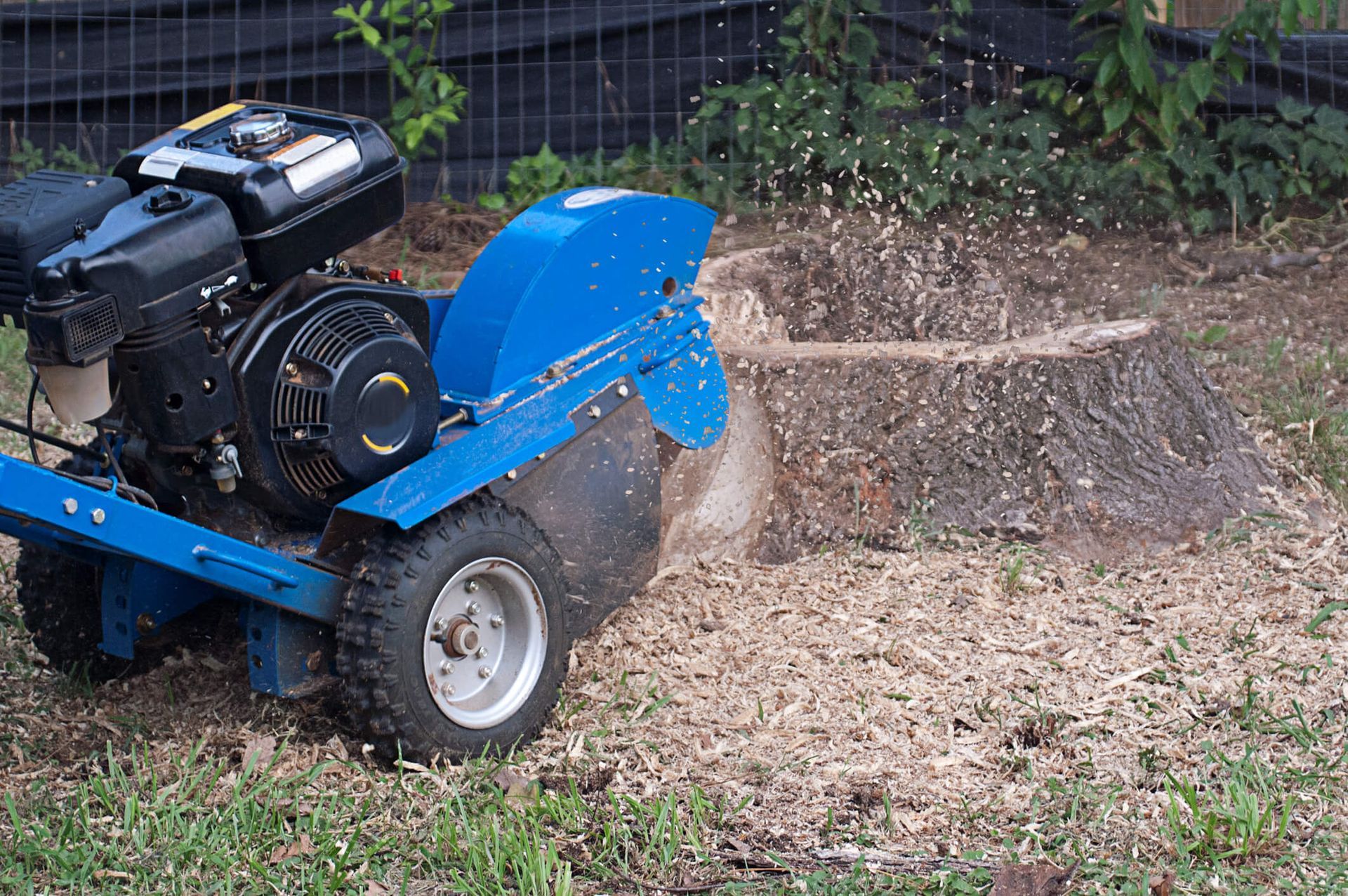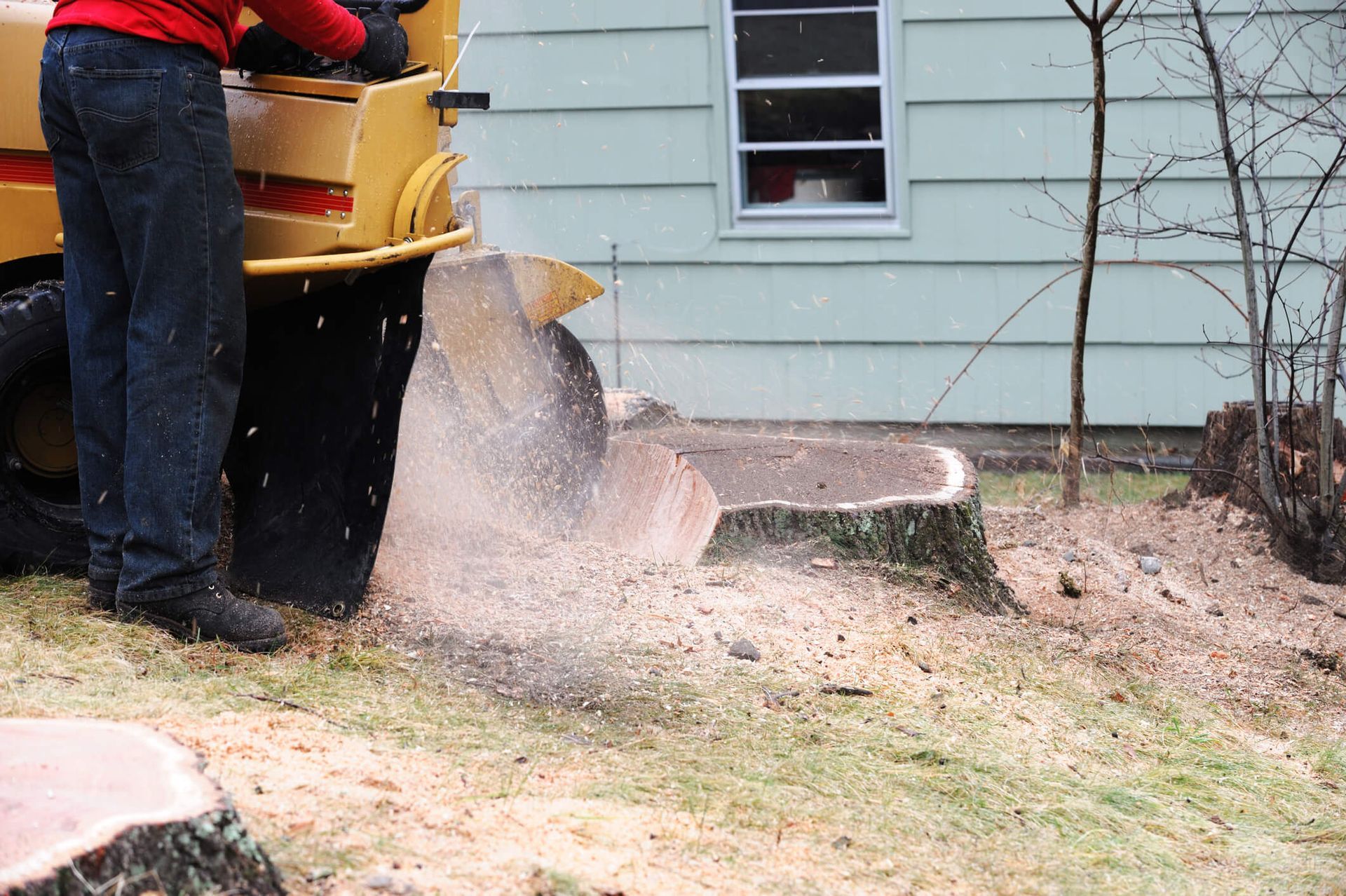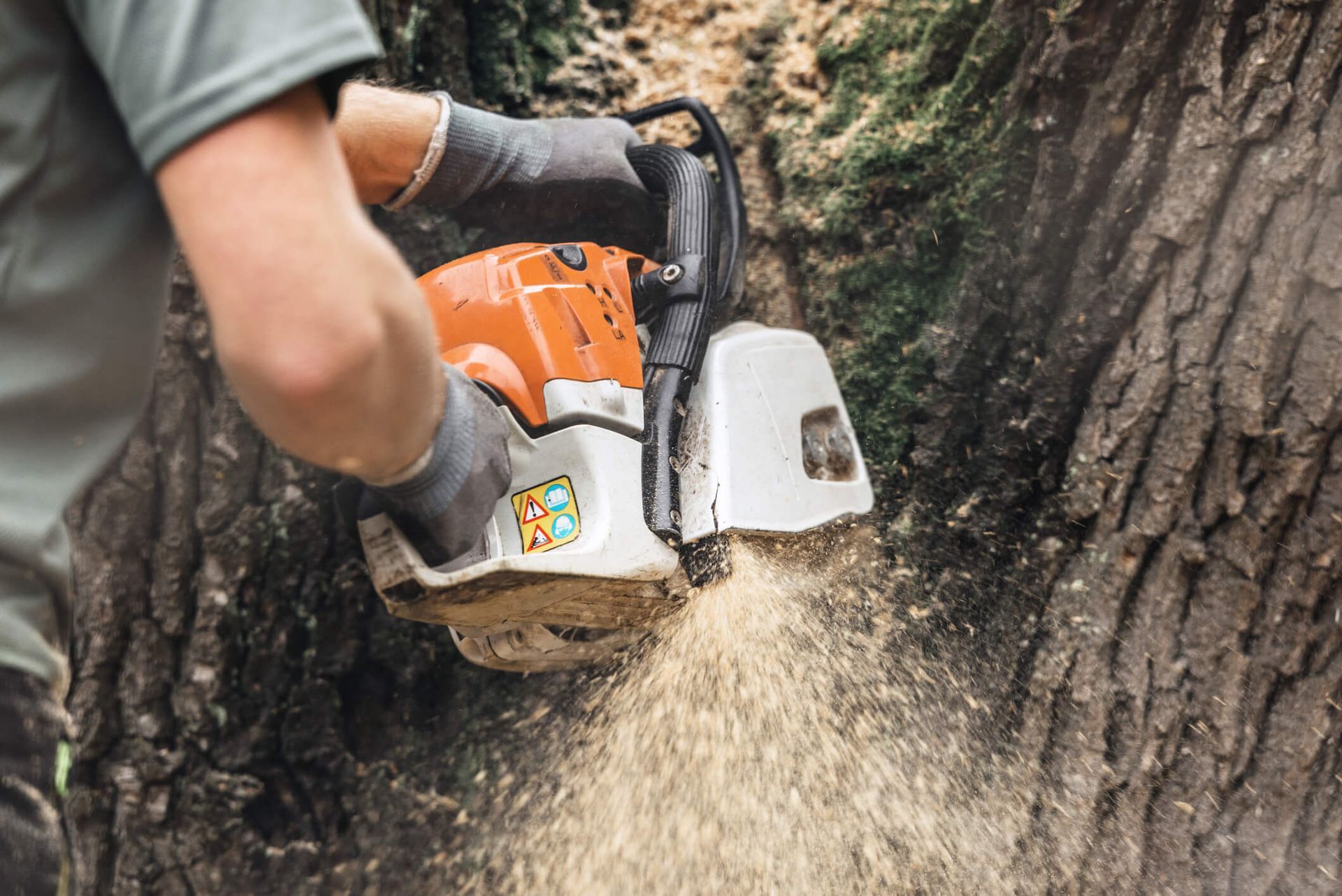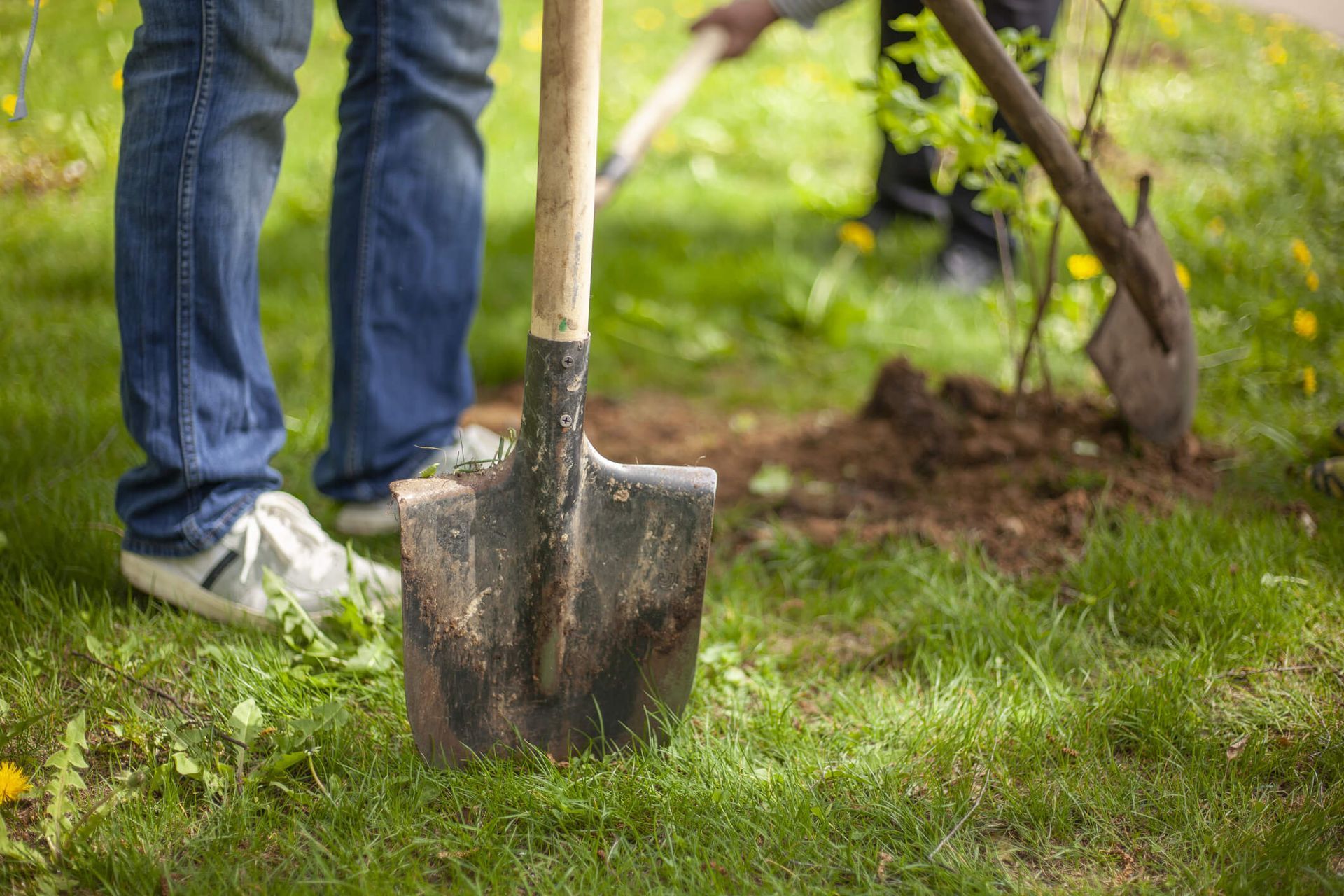What Happens to Roots After Stump Grinding?
What Happens to Roots Following Stump Grinding?
Even though natural landscapes are stunning and fascinating, having a tree stump in the wrong place is frequently viewed as a burden rather than a work of art. A stump detracts from the aesthetics of your front yard, yard, or lawn and reduces the usable space (attempting to trim around a stump can be one of the most tedious tasks).
Grinding tree roots is a practical option that can enhance the usefulness and appeal of your yard, front yard, or lawn. Stump grinding removes the visible parts of trees lacking functional or aesthetic purposes to maintain a continuous and fully functional landscape.
Continue reading to find answers if you have any questions about stump grinding, or contact SYS Enterprises Tree Services to speak with a team of experts immediately if you have any queries about how to deal with the tree roots after stump grinding.
Understanding the Root System
Despite being crushed down, a stump's roots can still produce sprouts. The sprouts may occasionally mature into full-grown trees. It is because, after stump grinding, the roots are still living. If the earth contains enough nutrients, the plant can grow again. Their nutrients govern the sprouts' health.
There are many different types of roots in a tree's root system. There are big perennial and little feeder roots, with longer roots spread horizontally. However, feeder roots comprise most of the root system's surface area and are only 1/16 inch in diameter.
From the big roots, the feeder roots spread outward and upward. Those are the roots that help a tree grow by absorbing nutrients. The lifespan of these roots is relatively brief, though, and the extensive roots provide a sturdy foundation and stability for the tree.
Stump Grinding Process
The stump grinding procedure is reasonably straightforward, rapid, and economical.
When planning to perform your stump grinding, all you'll need is a stump grinder that you can hire, earplugs, a shovel, eye protection, and a wheelbarrow.
When you have all the necessary tools, gently place your stump grinder on the stump you want to remove. Before slowly lowering it onto the stump, ensure that you turn on the grinder. If you move the grinder too quickly, it could jam and become unusable.
Sharp, revolving blades are used in stump grinders to carve away from the stump until it's flush with the ground. You can quickly dispose of the many woodchips remaining after grinding the stump with a shovel and wheelbarrow.
How far can you grind a stump?
You could be concerned about whether a hole will remain where the tree stump once was if grinding it up leaves its roots in the ground. Yes, but everything depends on how much you decide about stump grinding, so be careful. However, experts like us at SYS Enterprises Tree Services follow the business standard wherein the stump grinds till there is no longer a tree stump. Some machines and equipment may grind stumps to as much as 18 inches deep.

What are the long-term effects of stump grinding?
People commonly use stump grinding to remove tree stumps from the ground, which entails removing the stump and roots to below ground level by employing a rotating cutting disk machine. While stump grinding eliminates tree stumps, there are some long-term effects to consider.
One of the most significant long-term effects of stump grinding is that it can change the soil composition around the stump. During the grinding process, the machine produces wood chips that people often leave on the ground, and as they decompose, they can alter the soil's pH balance and nutrient content. It can impact the growth of plants and trees in the area and may require additional soil amendments or fertilization to maintain healthy growth.
Another potential long-term effect of stump grinding is the impact on the surrounding landscape. Stump grinding can create large holes where they remove the stump and roots, which can be hazardous if left uncovered. If people do not operate the machine carefully, stump grinding can also cause damage to nearby structures, such as sidewalks or driveways.
Finally, stump grinding can also impact the local ecosystem. Tree stumps provide a habitat for insects, birds, and small animals, and removing them can disrupt the ecosystem's natural balance. Considering the potential impact on wildlife before grinding a stump is essential.
Stump grinding can effectively remove tree stumps, but it is essential to consider the long-term effects on the soil, landscape, and local ecosystem. When deciding to grind a stump, people should take proper care and consideration, and it is often advisable to consult with a professional arborist or landscaper to determine the best course of action for their specific situation.
What Happens to the Roots After Stump Grinding
The roots will gradually decompose after people remove a tree through stump grinding. Depending on the type of tree and the stump's size, this process can take several years to complete.
As the roots decompose, they release nutrients into the surrounding soil, benefiting other plants. However, the decomposing roots can also attract insects and other pests like termites, so keeping an eye on the area around the stump is essential.
In some cases, the roots may grow even after removing the tree. It is especially true if the tree is part of a more extensive root system or if nutrients and water are still available in the soil. To prevent this from happening, people should ensure that the stump grinding process is thorough and that they remove all of the primary roots.
It's also possible for new trees or other plants to grow from the remaining root system. It can be problematic if the new growth interferes with nearby structures or landscaping. In these cases, the new growth will also need to be removed.
The fate of the roots after stump grinding will depend on several factors, including the type or what kind of tree species it is, the size of the stump, and the location of the roots. However, with proper stump grinding techniques and ongoing maintenance, the area around the stump can eventually return to a healthy and productive state.
What To Do With Roots After A Tree Removal
After cutting down a tree, what to do with the tree roots still in the ground is up to you.
Leave the roots behind.
Tree roots eventually degrade and enrich the soil with organic matter, even though it could take years. As a result, more nutrients are now available to the neighboring trees and plants.
Wood mulch should be applied over the roots if tripping risks are problematic.
Cut the sprouts
Cut out the sprouts when they develop if sprouting becomes a concern. You can use pruners to trim them or a lawnmower to run over them, but be careful not to harm your lawnmower, or it could become a costly experiment.
It can be a continuing process since some roots may continue to sprout for as long as seven years until they use up their energy reserves.
If you still desire to replace the removed tree, you can allow sprouts to develop into a whole tree.
Remove the roots
You might occasionally need to get rid of tree roots. There may be new development where the tree previously stood. A bug may have harmed the roots, and you want to ensure it won't return, or the roots may be a significant trip hazard.
Be prepared to pay a lot of money if you decide to have tree roots removed.
Removing roots from a tree that is still standing can stress the tree and potentially cause it to topple, so you should never do it. Bear in mind that a tree's roots keep it standing!
Take out the tree roots.
We do not advise using pesticides to kill tree roots, as some property owners do, for the following reasons:
- The majority of herbicides can damage surrounding trees or other woody plants.
- Herbicides are exceedingly dangerous and can harm the health of visitors to the property and their pets.
- There should be several herbicide applications.
- Many local governments have rules and regulations that forbid or restrict the use of herbicides.
- They can impact wildlife, water sources, and other aspects of our local ecology, which is terrible.
- Even if herbicide has killed the roots, they still require removal by digging.
- Where the herbicide is applied, you cannot grow anything else.
We advise against using herbicides because applying them and awaiting them to take effect may take a long time. Instead, let the roots decompose organically. The rotting roots turn into a free source of organic material for your soil, plus it's safer and less expensive.
Schedule Now Your Stump Grinding For Your Next Tree Stump Removal
Professional tree removal through stump grinding can prevent many root problems.
The stump grinding services provided by our SYS Enterprises Tree Services professionals will eliminate your tree stump and stop it from growing again. Request an estimate of costs for stump grinding now. Or if you want to know more information or you have questions about our services, don't hesitate to contact us at (502) 724-6950.
For more information on how https://www.systreeservice.com/ can help you with various tree services, please contact us at (502) 724-6950, or visit us here:
Trees Unlimited | SYS Enterprises | Indiana & Kentucky Tree Services
8808 Stoney Point Road Charlestown, Indiana 47111
Charlestown, Indiana Stump Grinding Services
FAQs: What Happens to Roots After Stump Grinding?
1. What is stump grinding, and how does it work?
Stump grinding is when a specialized machine grinds down a tree stump into wood chips. This process typically leaves the roots in the ground while removing the visible parts of the stump.
2. What tools do I need for stump grinding?
You will need a stump grinder, earplugs, eye protection, a shovel, and a wheelbarrow. These tools help ensure a safe and efficient grinding process.
3. How deep can a stump be ground?
Stump grinders can grind stumps to a depth of about 12 to 18 inches below ground level, depending on the machine and the stump's size.
4. What happens to the wood chips after stump grinding?
The wood chips produced during grinding can be left on-site or disposed of. As they decompose, they can enrich the soil but may also alter the soil's pH balance and nutrient content.
5. Are there any long-term effects of stump grinding on the soil?
Yes, stump grinding can change the soil composition around the stump, affecting its pH and nutrient levels. This might require additional soil amendments for optimal plant growth.
6. Can new plants grow in the area where a stump was ground?
Yes, new plants can grow in the area, but monitoring for any sprouts from the remaining roots is essential. Proper care should be taken to ensure healthy growth.
7. What should I do if sprouts start growing after stump grinding?
If sprouts appear, they can be trimmed back using pruners or a lawnmower. However, this may need to be done repeatedly for several years until the roots are depleted.
8. Is it necessary to remove all the roots after stump grinding?
Not necessarily. Leaving the roots can benefit the soil as it decomposes, enriching it. However, removal may be necessary if roots pose a trip hazard or interfere with new development.
9. Can I use herbicides to kill any remaining roots?
Using herbicides for root removal is not recommended, as they can harm surrounding plants, wildlife, and soil health. Allowing the roots to decompose naturally is a safer and more environmentally friendly option.
10. When should I consult a professional for stump grinding?
If you need help handling stump grinding or root management, it's best to consult a professional tree service. They can provide expert advice and services tailored to your specific situation.


